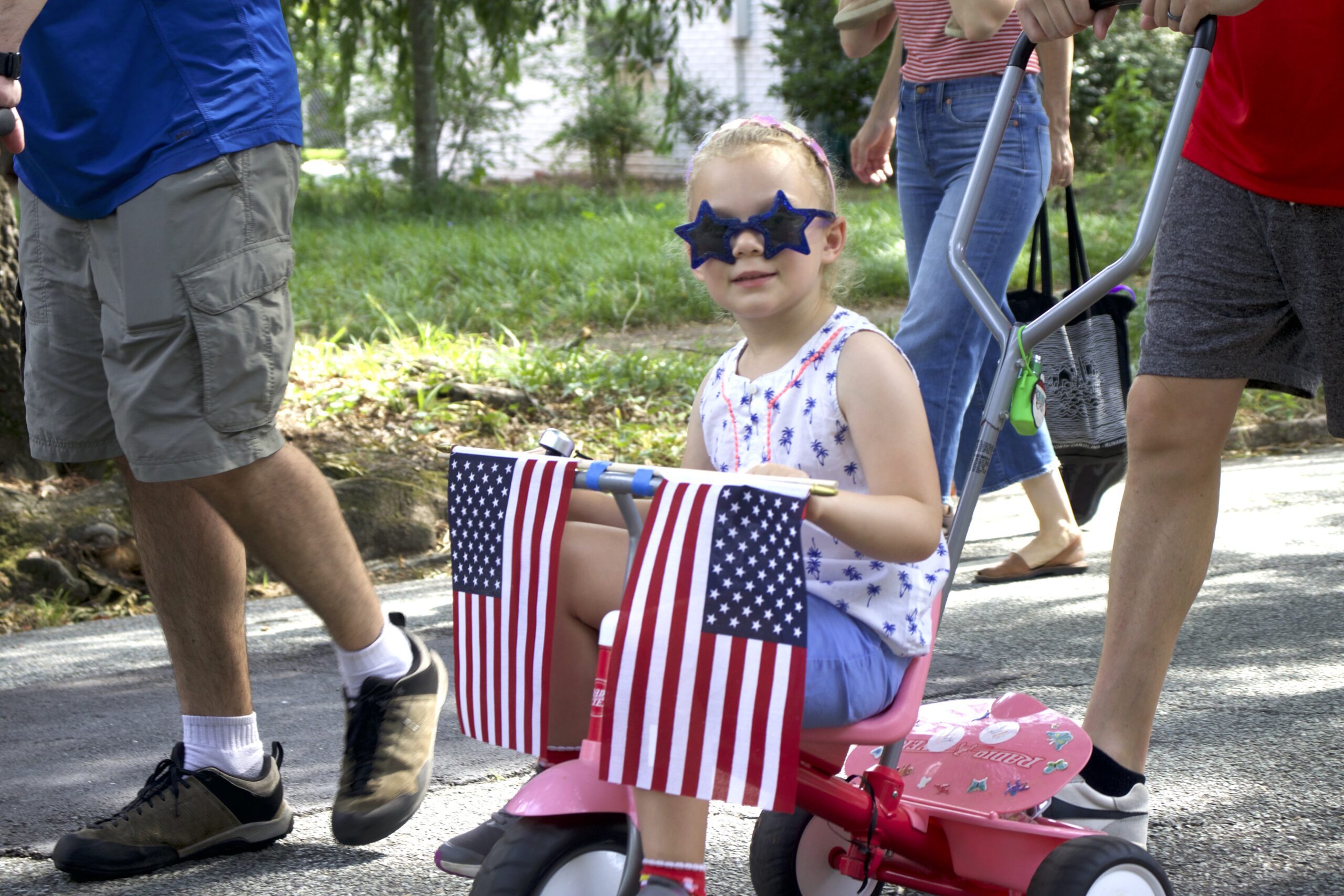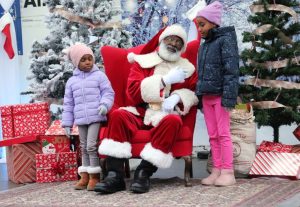Oval Drive Park is quiet in the early morning sun on July Fourth. The north half of the park spans the block between West Club Boulevard and Woodrow Street, containing a patch of grass, a metal baseball backspot placed haphazardly in the middle of the field, and a small playground with swings and a sun-bleached yellow slide. But something is special about the park today.
The sky is full of colorful flags, almost too many to count. They hang from wires strung from tree to tree, end to end over the park. Not only American flags ripple in the air: a pride flag, a North Carolina state flag, an Israeli flag, and more all fly proudly—different shapes, sizes, wears and tears form a collection of different worlds represented in the sky.

The Watts-Hillandale Neighborhood Parade is Durham’s oldest 4th of July parade, started in 1950. It spawned from the boredom of children and the kindness of Alice and Tom Walker, residents of Durham who sought to change the experience of the neighborhood kids. They decided to host a parade in the damp summer heat on West Club Boulevard to give the kids something fun to do to celebrate the holiday.
To this day, the Watts-Hillandale parade draws hundreds of Durhamites from the neighborhood out to the street with decorated bikes, neighborly love, and enough ice-cold soda pop to flood the Bulls stadium.
The flags are hung, and families begin to trickle into the park. The first to breach the grass is a toddler in a red, white, and blue plaid jumpsuit, his mother eagerly snapping photos as he teeters across the field.
Families evade the hot sun by sitting on the shaded grass steps, catching up about who decided to move and who is hosting the barbecue and whose daughter married whom.
As the clock approaches 10 a.m., the start time of the parade, the streets have become a sea of red, white, and blue, with flagpoles sticking out like buoys. Lines of people of all ages stretch down Oakland Avenue and West Club Boulevard, growing longer by the minute.
The chatter grows louder as anticipation rises, and by the time the police escort arrives, the parade is raring to go. Children sit impatiently on their bikes and scooters, most of them decorated with patriotic shiny tinsel and ribbons.
Finally, as toddlers squirm in their parents’ arms, the police motorcycles flick on their flashing blue lights and the firetruck blares its siren. Parade organizers holding large American flags on poles trail the truck as the leaders of the march.
The shifting crowd lurches forward, and children weave in and out at the waists of the older paraders, laughing and chatting—some elementary age boys cheering “America! America!”
Fellow neighbors spill out of the side streets, some to watch and some to join. The parade is a community tradition, kept local intentionally. “It’s the greatest neighborhood ever!” says neighborhood resident Paul Feldblum. He later added, “We’ve been here a long time– we brought our kids here, and our kids are bringing their kids here.”

Children are the star of this parade. They traipse down the asphalt, skipping and waving the flags they hand-painted on cardstock the night before. Some ride on their parents’ shoulders, some in wagons, some in strollers, so even the youngest are included.
There is no colorful candy thrown from floats, no brassy marching band, no glamorous dance ensemble—yet the children are just as happy as at any other parade. They hold hands with neighborhood friends they have grown up with and walk beside residents who have been there long before they were born. Even begrudging teenagers crack a smile as a man in red, white, and blue cycling gear and holographic glasses races past them on his bike, blasting “America the Beautiful” from a speaker strapped to his back.

Returning to the main lawn, people swarm buckets of ice-cold Coke cans as if they were the last drops of water in the desert. The crowd is lively until a chorus begins to sing “Oh say, can you see…” The O.K. Chorale, a choir of men and women led by neighborhood residents David Dodson and Florence Nash, stand in two rows and sing the anthem to a hushed crowd. By the second verse, the entire field is singing in harmony.

Kids and adults alike relish the refreshing cold as the crowd dwindles, some off to Jordan Lake, some to a family lunch. Kids ask their parents, “Can we have a playdate?” and elementary schoolers bike into the streets with confidence, still soaking wet from the hose.
Before the clock strikes eleven, the parade is over, but a smaller crowd lingers, still in high spirits.. To Sally and Clare Adkins, this gathering is the best part of the event.
“For all the neighborhood to come together, to see people just coming out of their houses walking down the street,” said Sally. “It was just such a neighborhood feel.” Her husband Clare added, “That’s more important to me than the parade.”
Above: Scenes from the venerable Watts-Hillandale Fourth of July Parade. Photos by Maddie Wray — The 9th Street Journal







